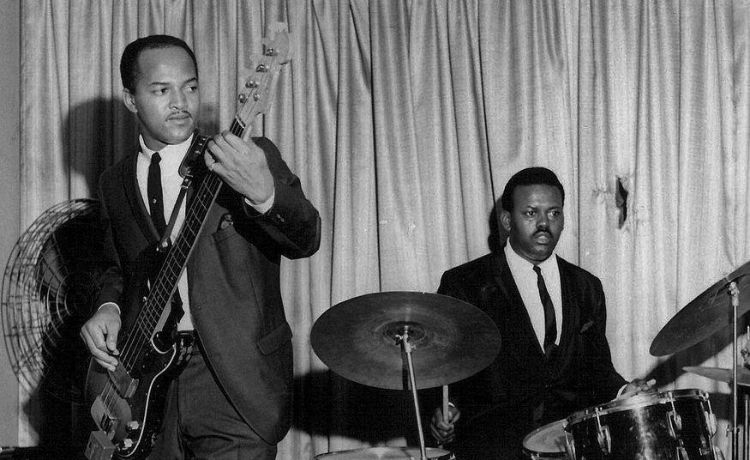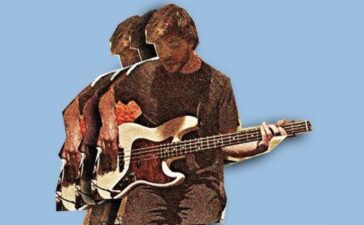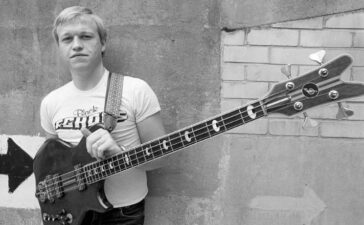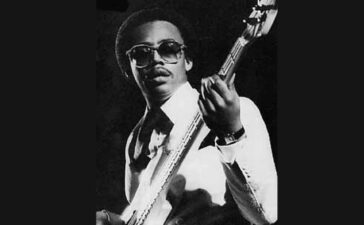James Jamerson, the legendary bassist behind countless Motown hits, is widely regarded as one of the most influential musicians in the history of popular music. His work with the Funk Brothers, Motown’s house band, created the foundation for the “Motown Sound”—a distinctive blend of rhythm and melody that defined soul, pop, and R&B throughout the 1960s and 1970s. One of his lesser-known yet extraordinary bass performances appears on “Darling Dear” by The Jackson 5, a song from their 1970 album Third Album. Jamerson’s bass line on this track is a prime example of his genius, blending melodic sophistication with rhythmic complexity to create a groove that both supports and elevates the song.
The Foundation of “Darling Dear”
“Darling Dear” is a bright, uplifting track, featuring the youthful energy of Michael Jackson’s lead vocals during his early days with The Jackson 5. The song’s melody is catchy and full of life, and Jamerson’s bass line provides a counterpoint that adds depth, soul, and an irresistible groove.
At first listen, the bass line may seem deceptively simple, but as with much of Jamerson’s work, there is a layer of complexity that becomes apparent upon closer inspection. Jamerson was known for creating bass lines that danced around the melody, incorporating syncopation, chromatic runs, and passing notes in a way that made his playing feel spontaneous yet meticulously crafted.
Key Characteristics of the Bass Line
- Melodic Movement Jamerson’s approach to the bass was highly melodic. He rarely played static root notes, preferring to weave in and out of the chord changes with lines that sounded as though they could be standalone melodies. In “Darling Dear,” Jamerson’s bass never sits still. He introduces chromatic runs and scalar passages that elevate the harmonic structure of the song, making the bass line feel like a conversation with the vocals and other instruments.
For example, instead of simply playing the root notes of the chords in the verses, Jamerson outlines the harmony with arpeggios, often incorporating the fifth and octave, as well as moving through passing tones to connect different chord tones. This melodic approach creates an interactive dynamic between the bass and the other elements of the arrangement. - Syncopation and Rhythm One of Jamerson’s signature traits is his use of syncopation, and it’s in full display on “Darling Dear.” His bass line often places accents on offbeats, giving the track a rolling, propulsive feel that contrasts with the song’s more straightforward drum pattern. This rhythmic interplay is subtle but crucial, adding an extra layer of complexity that makes the groove deeper and more engaging.
Jamerson often anticipates chord changes with quick note flurries or syncopated runs, creating a push-pull dynamic that feels fluid and organic. His rhythmic choices contribute to the song’s danceable quality, even though they are far from conventional. - Chromatic Passages Another hallmark of Jamerson’s style was his liberal use of chromaticism. He often used chromatic passing notes to add tension and release within a line, moving stepwise between chord tones in a way that added richness and unpredictability. In “Darling Dear,” Jamerson frequently employs chromatic lines that make the bass line feel more fluid and jazz-like.
These chromatic lines give the song a sense of forward momentum, as Jamerson rarely lands squarely on a beat without some kind of lead-in. This makes his playing feel dynamic and ever-changing, keeping the listener’s ear engaged. - Rhythmic Density and Ghost Notes Jamerson was also a master of incorporating ghost notes—soft, muted notes that add rhythmic texture to a line. On “Darling Dear,” ghost notes are used sparingly but effectively, adding percussive depth to the bass line without overwhelming the song’s bright, pop-oriented feel. These ghost notes give the line a sense of groove that feels deeply rooted in funk, jazz, and R&B.
Additionally, Jamerson’s ability to pack multiple notes into a short phrase without losing clarity or groove is remarkable. His bass lines on “Darling Dear” are busy yet never feel overplayed. Every note has a purpose, contributing to the rhythmic and harmonic structure of the song without overshadowing the melody.
The Instrument and Technique
James Jamerson’s bass of choice was a 1962 Fender Precision Bass, famously nicknamed “The Funk Machine.” This instrument, paired with flatwound strings, was key to his warm, round tone. Jamerson played exclusively with his index finger, which he called “The Hook,” and he rarely, if ever, adjusted the settings on his bass or amplifier. This unique technique contributed to his distinctive, punchy tone, which was full of life and complexity.
His use of flatwound strings also gave his bass a smoother sound, which helped his notes blend seamlessly with the rest of the band. On “Darling Dear,” his tone is both fat and articulate, providing a solid foundation for the song while cutting through the mix with clarity.
Jamerson’s Role in “Darling Dear”
In “Darling Dear,” as in many other Motown songs, Jamerson’s bass line serves as the foundation of the groove while simultaneously acting as a second melodic voice. His playing never simply follows the root notes or the expected patterns but instead engages with the other elements of the song—vocals, drums, and keyboards—in a way that adds sophistication without ever feeling intrusive.
Jamerson’s playing elevates “Darling Dear” from a straightforward pop song to something richer, more soulful, and more complex. His ability to inject jazz-inspired melodic ideas and rhythmic complexity into a pop framework is what makes him such an extraordinary player.
Legacy and Influence
James Jamerson’s bass line on “Darling Dear” is one of many examples of his genius as a musician. Though his contributions to Motown were often uncredited during his lifetime, his influence on modern bass playing is immeasurable. His ability to blend groove, melody, and harmony into a cohesive, driving force has inspired generations of bassists across multiple genres, from funk and R&B to rock and jazz.
“Darling Dear” is a reminder of Jamerson’s unparalleled ability to transform a song from the bottom up. His bass lines were more than just rhythmic support; they were integral to the structure and soul of the music. For anyone looking to understand the magic of James Jamerson, “Darling Dear” offers a perfect example of his mastery—deceptively complex, endlessly groovy, and filled with the kind of soul that defines the Motown sound.
In conclusion, Jamerson’s performance on “Darling Dear” is a masterclass in how to create a bass line that is both intricate and foundational. It’s a testament to his ability to balance rhythmic complexity with melodic grace, making him one of the greatest bass players in the history of popular music.









